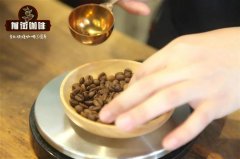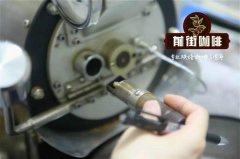How to learn coffee flowers from scratch? is it difficult for beginners to learn coffee flowers?

Professional coffee knowledge exchange more coffee bean information please follow the coffee workshop (Wechat official account cafe_style)
The pull flower works produced by coffee masters are always amazing. Making a good espresso is an art in itself, but making a variety of patterns on the coffee is the icing on the cake. It may take years to develop the perfect skill of coffee flower drawing.
1. Two common methods for making coffee flowers
The first is "free dumping" (the pattern is formed when milk bubbles are dumped), which is widely used in American cafes and takes longer to prepare.
The second kind: "carving" (use a coffee needle to paint on the foam after pouring milk).
Second, the steps of making coffee flowers.
How is the perfect flower born? Let's take a look at some experience from the coffee master.
Step one: the preparation of perfect milk foam
1. Pour enough ice milk (about 1 ℃) into the flower cup. In the case of plenty of time, you can put the flower cup into the refrigerator to cool down before use, so that you can have enough time to prepare milk when it is cooled, so as to prevent the milk from boiling. In order to make the best foam, you should prepare a portable liquid thermometer in advance to help you remove the milk from the steamer at the most appropriate time.
2. Insert the steamed milk stick into the bottom of the cup in the flower cup. Turn on the steamer and slowly pull the steamed milk stick close to the surface of the milk. When the milk is foamed, the milk rises and lowers the steamed milk stick, keeping the steamed milk stick in the 1cm position below the liquid level. To prevent excessive mixing of milk and the emergence of a large number of milk bubbles. In this way, the smooth milk foam is finished.
3. When the temperature of the milk rises to 37 ℃, put the steaming stick against the side of the glass, insert the milk deeply, and gently stir the milk counterclockwise.
4. Stir the milk temperature to 65 ℃ to 68 ℃. Make sure the temperature of the milk never exceeds 71 ℃. The speed of heating varies with different brands of steamers. Some brands of steamers heat too fast and may need to remove the milk from the steamer in advance to prevent it from boiling. The reason for this is that the temperature continues to rise after the milk stops heating. You need to break up the big bubbles, leaving only small bubbles.
5. Turn off the steamer, remove the steaming stick and thermometer from the milk, and clean the steaming stick with a wet cloth.
6. Cool the milk for a few seconds so that the texture of the foam will be more dense.
7, shake the milk vigorously, shake the flower cup slightly on the table, until the bubble is broken, and then continue to shake the milk for 20 to 30 seconds.
Step 2: espresso needed to make coffee flowers
1. Use 7 to 8 grams of espresso powder for each cup of espresso. After making a milk bubble, it is time to start making espresso. Press the handle at a pressure of about 30 to 40 pounds (13.6 to 18 kilograms). You can first press on the scale to try to find the feeling. For most adults, the maximum pressure of pressing can be achieved with about one hand. Use a hand grinder to get an extra fresh taste. The hand grinder can control the thickness of the ground coffee powder by itself.
2. Extract espresso. A cup of perfect espresso will contain a little coffee oil, which can show the best taste of coffee. It takes 21 to 24 seconds to make the perfect espresso. When the time is about 24 seconds, the sweeter the coffee will be. The length of extraction time can be controlled by pressing the strength of the coffee powder. With enough pressure, the machine will slowly and evenly extract espresso; if not, the extraction time will be shorter.
3. If you pour the espresso into the cup, you need to add the milk foam within 10 seconds. According to your own situation, you can pour a seasoning into the cup in advance, and then pour in the espresso.
Step 3: the art of pouring milk foam and flower drawing
1. Try to make flower patterns. This kind of flower pattern is simple, elegant and easy to make. Of course, all the art of flower drawing takes time to master. The height of the foam is about 2 to 3cm from the bottom. When the cup is about half full, gently shake the cup back and forth, moving it slowly back and forth, and the pattern will stretch forward until the cup is filled. Shake it with your wrist and shake it gently instead of shaking it back and forth with your hands.
2. Try to make a heart-shaped pattern. This kind of pattern is also relatively easy, but it also needs practice to master. First of all, put the milk cup close to the edge of the coffee and pour a little milk foam in the same fixed place. Then raise the cup about 1 inch (that is, 2.54cm) and pour out a circle. Note that it is the milk cup that needs to be moved, not the coffee cup. The injected foam flow should be kept in the same position, shaking the cup back and forth to form a circle pattern. When you are about to finish pouring the foam, pull the cup over the heart-shaped pattern and draw the heart-shaped tail.
3. Decorate with templates, powder and foam. This step can be chosen or not, because most people like to limit the art of flower drawing to a "free form" method. If you can choose to explore similar "etching" methods to make a variety of patterns, you might as well try the following techniques.
To write on a bubble, such as "love", melt the milk chocolate and use a needle as a paintbrush to drag the liquid chocolate onto the foam to write. A more common practice is to poke the needle into the cream layer on the coffee, then drag the cream, and then draw a pattern on the pure white foam.
You can also choose to paint with chocolate in other ways. Pour the chocolate syrup on the foam layer and use a needle to create the pattern. Use chocolate to draw the outline of the pattern on the milk foam, and then draw a lot of connected circles along the chocolate with a needle, so that you can draw a wavy chocolate pattern.
Important Notice :
前街咖啡 FrontStreet Coffee has moved to new addredd:
FrontStreet Coffee Address: 315,Donghua East Road,GuangZhou
Tel:020 38364473
- Prev

Coffee beans are also male and female?
In the plant world, some species are male and female. Some are male and female flowers, which need to be pollinated before the female flowers bear fruit and grow seeds, such as melons and fruits. Some are male and female plants, male plants will not blossom fruit, such as papaya, willow. Coffee is a plant of Rubiaceae, which can self-pollinate. The same flower has stamens and pistils, so it can pollinate itself.
- Next

What's the difference between fair trade and direct trade in coffee? Starbucks Fair Trade Coffee
Professional coffee knowledge exchange more information about coffee beans Please follow the coffee workshop (Wechat official account cafe_style) Coffee, which is the second largest commodity in the world after oil. Like other agricultural products, the price will follow? The harvest fluctuates. In order to maintain the livelihood of millions of people in the global coffee industry chain, since 1962, exporting and importing countries have participated in and formulated the International Coffee Agreement (Int).
Related
- Beginners will see the "Coffee pull flower" guide!
- What is the difference between ice blog purified milk and ordinary milk coffee?
- Why is the Philippines the largest producer of crops in Liberia?
- For coffee extraction, should the fine powder be retained?
- How does extracted espresso fill pressed powder? How much strength does it take to press the powder?
- How to make jasmine cold extract coffee? Is the jasmine + latte good?
- Will this little toy really make the coffee taste better? How does Lily Drip affect coffee extraction?
- Will the action of slapping the filter cup also affect coffee extraction?
- What's the difference between powder-to-water ratio and powder-to-liquid ratio?
- What is the Ethiopian local species? What does it have to do with Heirloom native species?

